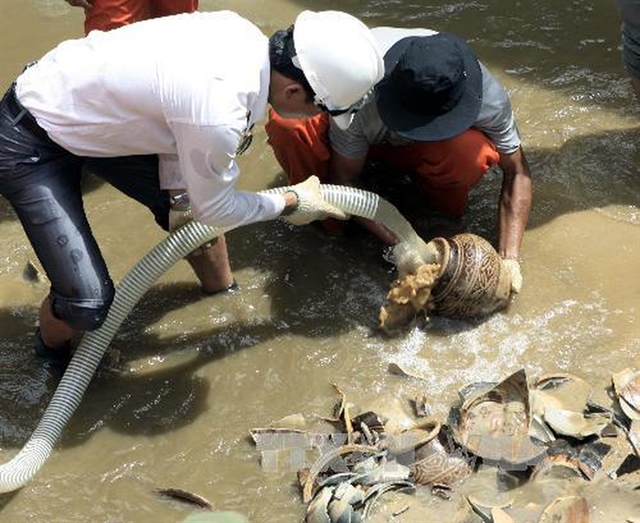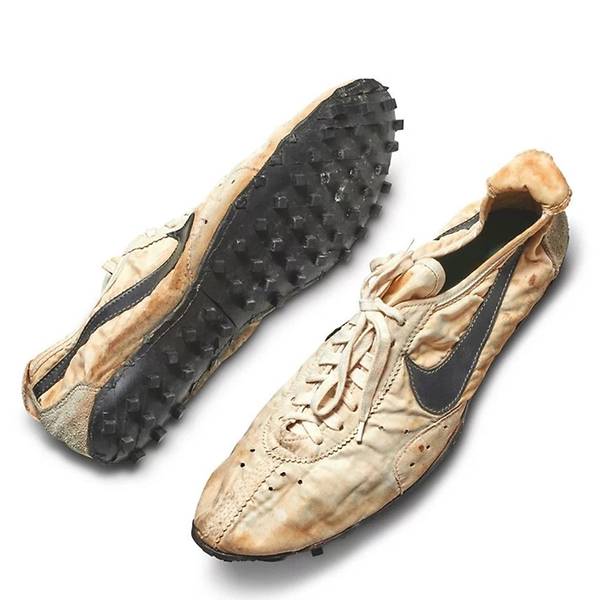

|
| Broken porcelain pieces and a jar are washed during the excavation of the ancient ship in the area of Dung Quất Harbour in Bình Sơn District, Quảng Ngãi Province. — VNA/VNS Photo Thanh Long |
QUẢNG NGÃI — The excavation of an ancient wrecked ship off of Dung Quất Harbour in Bình Sơn District, the central province of Quảng Ngãi has been halted to consult the Ministry of Culture, Sports and Tourism.
The total expense for the excavation is estimated at VNĐ48.4 billion (US$2 million); however, according to director of the province’s Department of Culture, Sports and Tourism Nguyễn Minh Trí, the wrecked ship has been severely damaged and the uncovered items are not significant.
“The items are mainly broken pieces with only scientific value,” he said.
The ship, which was discovered in August 2017, was expected to contain many high-grade porcelain objects dating from the Ming Dynasty in the 16th century.
According to a report by the department, the initial excavation fished out several pieces like pulleys, wood pieces and iron nails which demonstrated the existence of a wrecked ship within the area. The ship is estimated to be 30m long and 6m wide. It is located about 20m from the harbour at a depth of nine metres
The excavation is taking place on an area of about 800sq.m and was expected to last from June 29 to September 15, 2018. Due to several issues, the operation was extended until May 31, 2019.
The Ministry of Culture, Sports and Tourism approved the plan to excavate the ship with the project funded by the State budget. The ministry also proposed using another VNĐ10 billion ($430,000) from the province’s budget to pay border soldiers and local policemen protecting the site. The funds were expected to cover the excavation process and fishing out the ship. The preservation, restoration and exhibition of the ship and the items found inside would require more studies and separate funding.
The wrecked ship is the first one to be excavated without the participation of foreign specialists and private companies.
A report by the provincial culture department revealed that the excavation yielded 10,000 pieces of Chinese porcelain produced during the Ming Dynasty. The high-grade porcelain was produced in China's Jiangxi and Fujian provinces while the ordinary pieces were produced in Guangdong Province.
The report also said the ship would be highly valuable if the excavated objects remained intact.
The results of the excavation were expected to be of great academic value and enrich historians' understanding of the porcelain trade in Việt Nam’s waters.
However, most of the excavated items proved to be small broken pieces rather than untouched items. Extracting the whole ship would be challenging because it lies beneath a quay that is under construction. Moreover, the report said the ship has been severely damaged and would be difficult to restore.
“The Việt Nam National Museum of History has therefore proposed halting the excavation," Trí said. "Further evaluation of the results is being conducted by the museum with co-ordination from the province’s Department of Culture, Sports and Tourism."
According to Nguyễn Văn Đoàn, vice director of the Việt Nam National Museum of History, a press conference will be held as soon as there is a report on the Ministry of Culture, Sports and Tourism’s decision. — VNS



.jpg)











